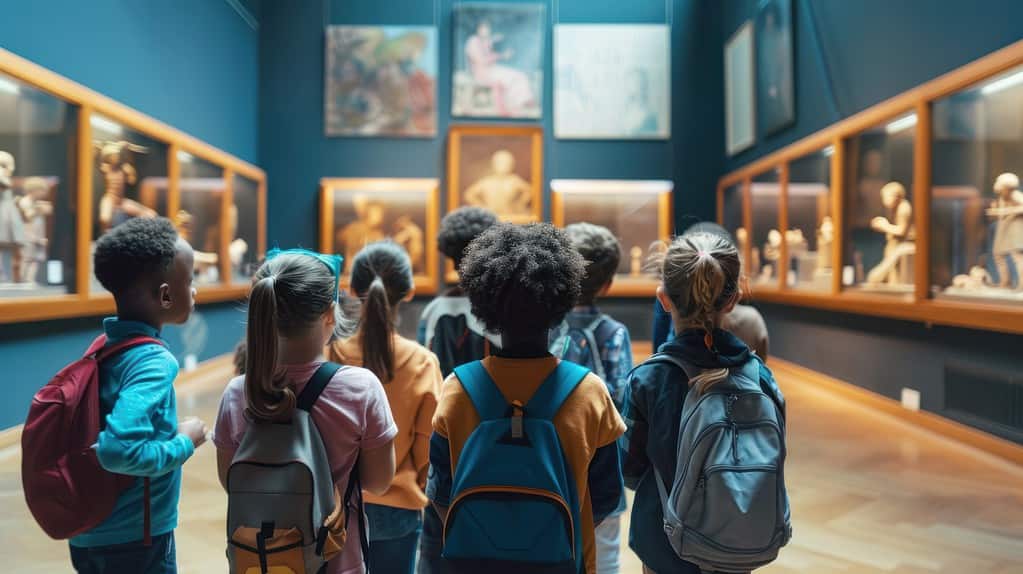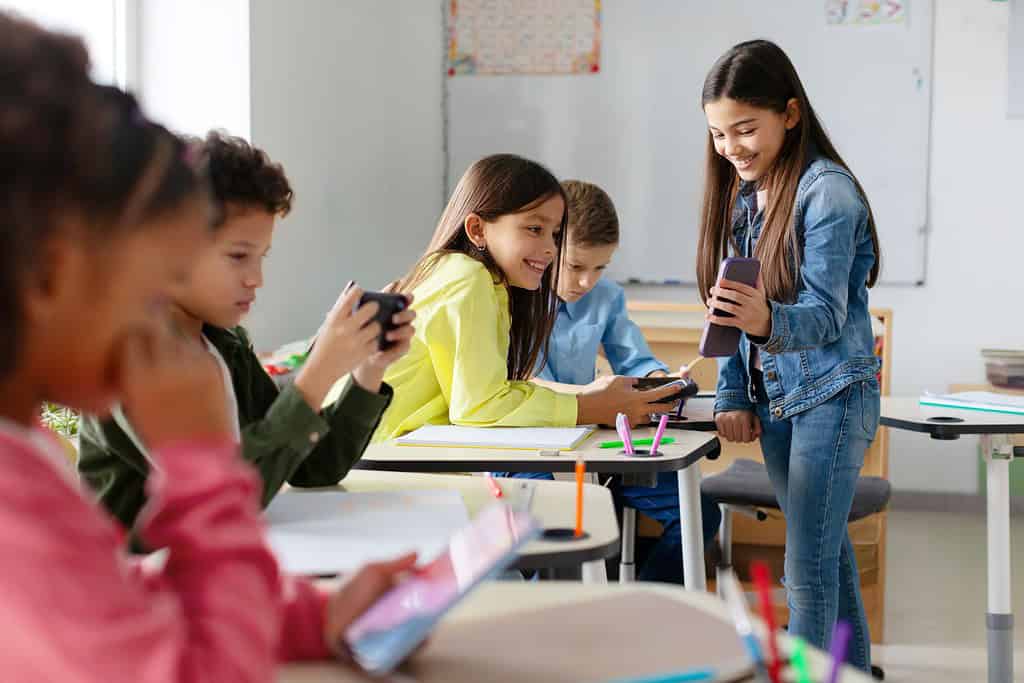In a world filled with distractions, it can be challenging to create an environment that motivates and engages children in their learning journey. However, with the right strategies, parents and educators can set the stage for a perfect learning environment that sparks curiosity and enhances comprehension. In this article, we will explore effective techniques and methods to cultivate motivation and engagement in kids, ensuring they have an optimal perfect learning environment experience.
One key strategy is to tailor the learning environment to suit the needs and interests of each child. By incorporating hands-on activities, interactive resources, and stimulating materials, children are more likely to stay focused and enthusiastic about learning. Additionally, creating a positive and supportive atmosphere, where children feel valued and encouraged, plays a vital role in fostering motivation and engagement.
Creating a perfect learning environment tailored to each child’s unique needs is essential for their success.
Utilising educational technology can enhance the perfect learning environment, making it more interactive and engaging for children.
Furthermore, incorporating technology can be a powerful tool in enhancing learning experiences. Utilizing educational apps, interactive websites, and multimedia resources can pique children’s interest and make learning more enjoyable and interactive.
Join us as we delve deeper into these strategies and explore additional techniques to create the perfect learning environment that fuels motivation and engagement in kids, ensuring they thrive in a supportive perfect learning environment.
A positive perfect learning environment is crucial for fostering motivation and engagement in children.
Create a positive learning environment
A positive learning environment is crucial for fostering motivation and engagement in children. When children feel safe, supported, and valued, they are more likely to participate actively and invest in their learning. Building a positive classroom or home environment starts with establishing clear expectations and rules that promote respect and collaboration. This creates a sense of belonging and provides a foundation for a positive learning experience.
A perfect learning environment promotes effective communication and feedback, key elements for student success.
What makes a perfect learning environment?
Understanding how to create a perfect learning environment can significantly influence motivation and engagement in children.
Additionally, incorporating elements that stimulate curiosity and creativity can greatly enhance children’s motivation. Bright and colorful classrooms or learning spaces, displays of students’ work, and interactive learning materials can all contribute to a positive and engaging environment. By creating a visually appealing and inviting space, children are more likely to feel excited and motivated to learn.
Making lessons relevant helps to create a perfect learning environment.
When challenges are met with support, a perfect learning environment is established.
Moreover, fostering a positive learning environment requires effective communication and feedback. Providing constructive feedback and praise when warranted helps children understand their progress and motivates them to continue putting in effort. By creating an atmosphere of encouragement and support, children are more likely to take risks, ask questions, and actively engage in their learning journey.
In a perfect learning environment, tailoring activities to children’s interests is key to fostering engagement.
Utilising technology effectively can transform any classroom into a perfect learning environment.
A nurturing and supportive atmosphere is integral to a perfect learning environment.
Factors that influence motivation and engagement in kids
Incorporating technology in a perfect learning environment allows for enhanced engagement.
Educational apps can be a great asset in a perfect learning environment.
Interactive websites enhance the perfect learning environment by providing engaging content.
Multimedia resources can elevate the perfect learning environment, making lessons more engaging.
Understanding the factors that influence motivation and engagement in children is crucial in creating the perfect learning environment. While every child is unique, certain common factors can impact their motivation levels. One such factor is autonomy. Allowing children to have a say in their learning, such as offering choices or incorporating their interests into lessons, can significantly enhance their motivation. When children feel a sense of ownership and control over their learning, they are more likely to be engaged and invested in the process.
Engaging in active learning activities reinforces the principles of a perfect learning environment.
Science experiments in a perfect learning environment can captivate children’s curiosity.
Art projects serve to enhance the perfect learning environment by promoting creativity.
Role-playing activities can bring the essence of a perfect learning environment to life.
Building positive relationships within a perfect learning environment enhances motivation.
Understanding individual students is crucial for a perfect learning environment.
Collaborative activities can significantly strengthen a perfect learning environment.
Regular feedback fosters a perfect learning environment by reinforcing positive behaviours.
Another important factor is relevance. Making learning meaningful and applicable to real-life situations helps children see the value and purpose behind their education. By connecting lessons to their interests, experiences, and future goals, children are more likely to be motivated and engaged. This can be achieved through real-world examples, project-based learning, or incorporating current events into the curriculum.
Furthermore, challenges and opportunities for growth play a significant role in motivation. When children are appropriately challenged, they are more likely to be engaged and motivated to overcome obstacles. Setting achievable yet challenging goals, providing opportunities for problem-solving and critical thinking, and celebrating progress and achievements can all fuel children’s motivation and engagement.
Creating meaningful connections enhances the perfect learning environment.
Incorporating student choice can further cultivate a perfect learning environment.
Strategies for creating a motivating learning environment
Tailoring the learning environment to suit the needs and interests of each child is a key strategy for enhancing motivation and engagement. One effective technique is incorporating hands-on activities. By providing opportunities for children to actively explore, experiment, and manipulate objects, they actively engage with the learning material. This can be done through science experiments, art projects, or even role-playing activities. Hands-on activities not only make learning more enjoyable and memorable but also encourage critical thinking and problem-solving skills.
Another strategy is utilizing interactive resources. Technology, such as educational apps and interactive websites, can be powerful tools in enhancing engagement. These resources offer a variety of engaging activities, quizzes, and multimedia elements that cater to different learning styles. By incorporating technology into lessons, children’s motivation and interest are often heightened, as they get to interact with the content in a dynamic and captivating manner.
Creating a positive and supportive atmosphere is also crucial for fostering motivation and engagement. When children feel valued, respected, and supported, they are more likely to take risks, ask questions, and actively participate in class. Encouraging collaboration, promoting positive peer relationships, and celebrating individual achievements can all contribute to a positive classroom environment. Additionally, providing a variety of learning opportunities that cater to different learning styles and preferences can help ensure that all children feel included and engaged.
Incorporating technology in the classroom to enhance engagement
Technology integration in the classroom supports a perfect learning environment.
Technology has become an integral part of our lives, and incorporating it into the classroom can greatly enhance engagement and motivation. Educational apps, interactive websites, and multimedia resources offer a wealth of opportunities to make learning more interactive and enjoyable. These tools can provide instant feedback, personalized learning experiences, and access to a vast array of information and resources.
One effective way to incorporate technology is through the use of educational apps. Educational apps offer interactive and engaging activities that can reinforce concepts, provide additional practice, and cater to individual learning needs. Whether it’s math, language arts, or science, there are countless educational apps available that can make learning fun and engaging for children of all ages.
In addition to apps, interactive websites can also be utilized to enhance engagement. Websites that offer interactive quizzes, games, and multimedia elements can capture children’s interest and make learning more exciting. These websites often provide immediate feedback, allowing children to track their progress and identify areas for improvement.
Furthermore, multimedia resources, such as videos, animations, and virtual reality experiences, can take learning to a whole new level. These resources provide visual and auditory stimuli that can help children better understand complex concepts and engage with the material in a more immersive way. By incorporating technology into the classroom, educators can tap into children’s natural curiosity and provide them with interactive and engaging learning experiences.
Encouraging active learning through hands-on activities
Active learning is a highly effective strategy for enhancing motivation and engagement in children. By providing opportunities for hands-on activities, children actively engage with the learning material, making it more meaningful and memorable. Hands-on activities allow children to explore, experiment, and manipulate objects, fostering critical thinking, problem-solving, and creativity.
One way to encourage hands-on learning is through science experiments. Science experiments not only spark curiosity and excitement but also provide opportunities for children to hypothesize, test, and analyze results. Whether it’s a simple experiment with household items or a more complex project, hands-on science activities can captivate children’s interest and make learning about scientific concepts more enjoyable.
Art projects are another excellent way to promote hands-on learning. Engaging in art allows children to express their creativity and explore their imagination. Whether it’s painting, drawing, sculpting, or collage-making, art projects provide a medium for children to engage with their learning material in a visual and tactile way. Through art, children can also develop problem-solving skills, learn about different cultures, and express their emotions.
Role-playing activities can also be highly engaging and promote active learning. By assuming different roles and scenarios, children can apply their knowledge and understanding in a real-world context. Role-playing activities not only foster creativity and critical thinking but also enhance communication and collaboration skills. Whether it’s reenacting historical events, conducting mock interviews, or participating in a simulated business, role-playing activities make learning interactive and fun.
Building positive relationships with students to increase motivation
Creating a positive learning environment goes beyond the physical space; it also involves building positive relationships with students. When children feel seen, heard, and valued, they are more likely to be motivated and engaged in their learning. Building positive relationships can be achieved through effective communication, active listening, and empathy.
Getting to know each student on a personal level is crucial in establishing positive relationships. Taking the time to understand their interests, strengths, and challenges allows educators to tailor their teaching methods and make learning more relevant and engaging. By showing genuine interest in their lives and experiences, educators can create a connection that fosters trust and motivates students to actively participate in class.
In conclusion, the perfect learning environment is essential for fostering a love of learning.
Moreover, providing opportunities for students to collaborate and work together can also strengthen relationships and enhance motivation. Group projects, peer mentoring, and cooperative learning activities promote teamwork, communication, and problem-solving skills. By encouraging collaboration, students not only learn from one another but also develop a sense of belonging and support.
Additionally, providing regular feedback and acknowledging students’ efforts and achievements are vital in building positive relationships. Constructive feedback helps students understand their progress and areas for improvement, while praise and recognition boost their self-esteem and motivation. By providing a balance of constructive feedback and positive reinforcement, educators can foster a supportive and motivating learning environment.
Providing meaningful and relevant learning experiences
One of the key strategies for enhancing motivation and engagement is providing meaningful and relevant learning experiences. When children can connect what they are learning to their interests, experiences, and real-life situations, they are more likely to be motivated and engaged.
One effective approach is incorporating real-world examples and applications into the curriculum. By showing children how the concepts they are learning can be applied in practical situations, educators make learning more meaningful and relevant. Whether it’s using math to solve everyday problems, analyzing current events in social studies, or conducting science experiments inspired by real-life phenomena, connecting learning to the real world helps children see the value and purpose behind their education.
Another way to provide meaningful learning experiences is through project-based learning. Project-based learning allows children to explore a topic or problem in-depth, conduct research, and create a final product or presentation. This approach promotes critical thinking, problem-solving, and collaboration skills, as children actively engage with their learning material. By giving children the freedom to choose topics or projects that interest them, educators tap into their curiosity and motivation.
Furthermore, incorporating student choice and voice into the learning process can greatly enhance motivation. Allowing students to have a say in their learning, such as offering choices for assignments or incorporating their interests into lessons, promotes autonomy and ownership. When children feel they have control over their learning, they are more likely to be engaged and motivated.
Utilizing effective teaching methods to keep students engaged
Effective teaching methods play a crucial role in keeping students engaged and motivated. Employing a variety of instructional strategies and techniques can cater to different learning styles and preferences, ensuring that all children have an opportunity to excel.
One effective teaching method is differentiated instruction. Differentiated instruction recognizes that children have different learning styles, strengths, and needs, and adjusts the instruction accordingly. By providing multiple pathways to learning, educators can engage students with diverse learning styles and keep them motivated. This can be achieved through flexible grouping, offering various learning materials and resources, and providing different levels of support and challenge.
Incorporating active learning strategies is another effective method to keep students engaged. Active learning involves students in the learning process through activities, discussions, and problem-solving tasks. By encouraging active participation, educators make learning more interactive and dynamic, increasing motivation and engagement. Strategies such as think-pair-share, group discussions, and hands-on activities actively involve students in their learning and promote critical thinking skills.
Additionally, incorporating technology into teaching methods can enhance engagement and motivation. Technology provides access to a wealth of resources, interactive activities, and multimedia elements that can capture students’ interest and make learning more enjoyable. Whether it’s using interactive whiteboards, online quizzes, or virtual reality experiences, technology offers opportunities for personalized and engaging learning experiences.
The curious case of Taylor Swift’s lyrics and school lessons: A light-hearted exploration
Why can children belt out every lyric from Taylor Swift’s latest hits but struggle to recall the quadratic formula? It’s a question that baffles parents and teachers alike. But fear not, for we have delved into this melodious mystery to bring you a whimsical explanation.
Firstly, let’s address the elephant in the room: catchy tunes. Taylor Swift’s songs are engineered to stick in your mind like gum on a hot sidewalk. They’re crafted with hooks that latch onto your brain, refusing to let go. School lessons, on the other hand, often lack a beat you can dance to, making them less likely to make a lasting impression.
Secondly, emotional connection plays a huge role. Swift’s lyrics often resonate with the highs and lows of life, creating a soundtrack to our personal dramas. Algebra, while thrilling to some, rarely invokes the same passionate response as a song about heartbreak or triumph.
Lastly, repetition is key. Children will listen to their favourite songs on repeat until the lyrics are etched into their memory. If only they could apply the same dedication to their history dates!
So, there you have it. While we can’t promise this will help your child ace their next exam, perhaps it can offer a moment of levity in the eternal struggle between pop culture and education. And who knows? Maybe one day, there will be a chart-topping hit about the periodic table that will change everything. Until then, keep singing along – it’s all in good fun!
The role of parents and caregivers in creating a perfect learning environment
Creating a supportive learning environment extends beyond the classroom; parents and caregivers also play a vital role in fostering motivation and engagement in children. By working together with educators, parents can create a seamless learning experience that supports children’s academic growth and development.
Regular communication between parents and educators is crucial in creating a supportive learning environment. Sharing information about children’s progress, challenges, and achievements helps parents stay involved and informed. This allows parents to provide additional support at home and reinforces the importance of education in children’s lives.
Furthermore, parents can create a positive home environment that supports learning. Designating a quiet and well-lit space for studying, setting a consistent homework routine, and providing necessary resources and materials all contribute to a supportive learning environment. Additionally, parents can encourage and model a love for learning by engaging in educational activities, reading together, and showing enthusiasm for their own learning.
Moreover, parents can support their children’s interests and passions outside of school. Whether it’s enrolling them in extracurricular activities, visiting museums or libraries, or finding opportunities for them to explore their interests, parents can help foster a love for learning beyond the classroom. By showing interest in their children’s hobbies and pursuits, parents demonstrate the value of lifelong learning and encourage children to pursue their passions.
Conclusion: Creating a lifelong love for learning
In conclusion, creating the perfect learning environment requires intentional strategies and approaches that enhance motivation and engagement in children. By tailoring the learning environment to suit the needs and interests of each child, incorporating technology, encouraging active learning, building positive relationships, providing meaningful experiences, utilizing effective teaching methods, and involving parents and caregivers, educators can create an optimal environment that fosters motivation and engagement.
When children are motivated and engaged, they develop a lifelong love for learning. They become active participants in their education, continuously seeking knowledge and embracing new challenges. By creating a perfect learning environment that sparks curiosity, supports growth, and nurtures a love for learning, parents and educators empower children to thrive academically and beyond. So, let’s embark on this journey together and unlock the full potential of every child.








